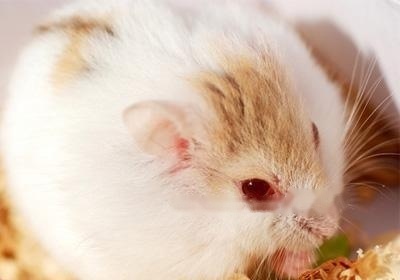
Amber Hamster
Length: 10-12cm
English name: Long-haired guinea pig
Origin: South America
Lifetime: 5-7 years
LonghairGuinea pig, also known as guinea pig, curly-haired Guinea pig, distributed in Peru, Brazil and other places. Guinea pigs are one of the most common pet breeds, and are loved by many people. Love and keep.
Class: Mammalia
Family: Guinea pig
Latin name : Cavia porcellus
Kingdom: Animalia
Order: Rodentia
Genus: Guinea Pig Genus
CurledGuinea pigs are relatively rare guinea pigs breed, its characteristic long hair is curly, and the care will be different, but its habits are still the same as the general guinea pig.
The long curly guinea pig is 22~34 cm long and weighs 400~700 grams. It has a short, stubby and round body, a large head, large, round and bright eyes, round ears, split upper lip, and short ears; limbs Short, front feet with 4 toes, hind feet with 3 toes, no external tail.
1. The body (liver and intestine) cannot synthesize vitamin C, and the required vitamin C must come from the feed. Humans, primates and guinea pigs lack synthetic vitamin C Therefore, when feeding guinea pigs, it is necessary to add vitamin C or fresh vegetables to the feed or feeding water. When vitamin C is deficient, scurvy occurs. One of its symptoms is semi-paralysis of the hind limbs, which is especially susceptible in winter. Supplement vitamin C, Symptoms disappear.
2. The ear canal is sensitive, which is convenient for hearing experiments. Guinea pigs are most sensitive to pure tones at 700-2000 cycles/sec.
3. It can tolerate hypoxia and hypoxia, 4 times stronger than mice and 2 times stronger than rats.
4. To Mycobacterium tuberculosis, Brucella, Leptospirosis, Maltese bacteria (Brucella meliteusis), Diphtheria bacillus, Q fever virus, Lymphocytic Choriomeningitis (Lymphocytic Choriomeningitis) Viruses etc. are very sensitive.
5. Guinea pigs are prone to allergic reactions, and the "complement" in serodiagnosis is made from guinea pig serum.
6. The thymus glands of guinea pigs are all in the neck, located between the angle of the mandible and the entrance of the thoracic cavity. The liver is divided into four main lobes and four lobules. The lung is divided into seven lobes, four lobes in the right lung and three lobes in the left lung.
7. The sexual cycle of guinea pigs is 16.5(12~18) days, the gestation period is 68(62~72) days, the lactation period is 21 days, and the litter size is 3.5(1~6), which is a complete Years, polyestrus animals, and postpartum sexual cycle. Animal cycles are divided into two categories: multi-cycle (multiple cycles in a year) and single-cycle (one-time cycle in a year). Except for primates, there are obvious species differences in the reproductive cycle of all mammals. Some animals, such as dogs, cats, pigs, horses, and cattle, have such periodic changes only during the reproductive season, and the reproductive organs are in the rest of the time. Atrophic resting state, but mice, rats, hamsters, guinea pigs and other animals under normal circumstances show a round-trip cycle of the birth cycle throughout the year. Guinea pigs, mice, rats, hamsters, rabbits and mice still have a postpartum sexual period, that is, after the animals are pregnant and give birth, they may become pregnant again within 48 hours or during a certain period of lactation, which is called postpartum sex. period or abnormal pregnancy.
8. The normal body temperature of the guinea pig is 38.6(37.8~39.5)℃, the heart rate is 280(200~360) times/min, the respiratory rate is 90(69~104) times/min, and the tidal volume is 1.8(1.0~360) times/min. 3.9)ml, ventilation rate 16ml(10~28)/min, oxygen consumption 816mm3/g live weight, blood pressure 75-120mmHg, total number of red blood cells 5.6(4.5~7.0) million/(mm3), hemoglobin 14.4(11~16.5 ) g/100ml blood, the total number of white blood cells is 5000~6000mm3, the platelets are 116,000/mm3, the total plasma protein is 5.4 (5.0~5.6) g%, the blood volume accounts for 6.4% of the body weight, 32 pairs of chromosomes, and a life span of 5 to 7 years.